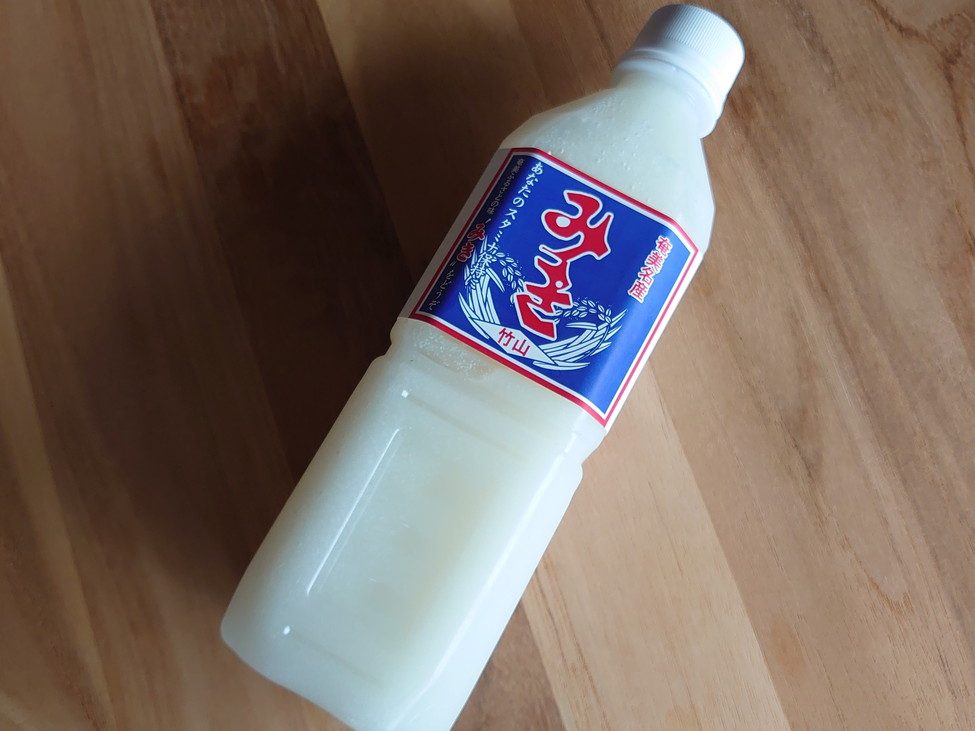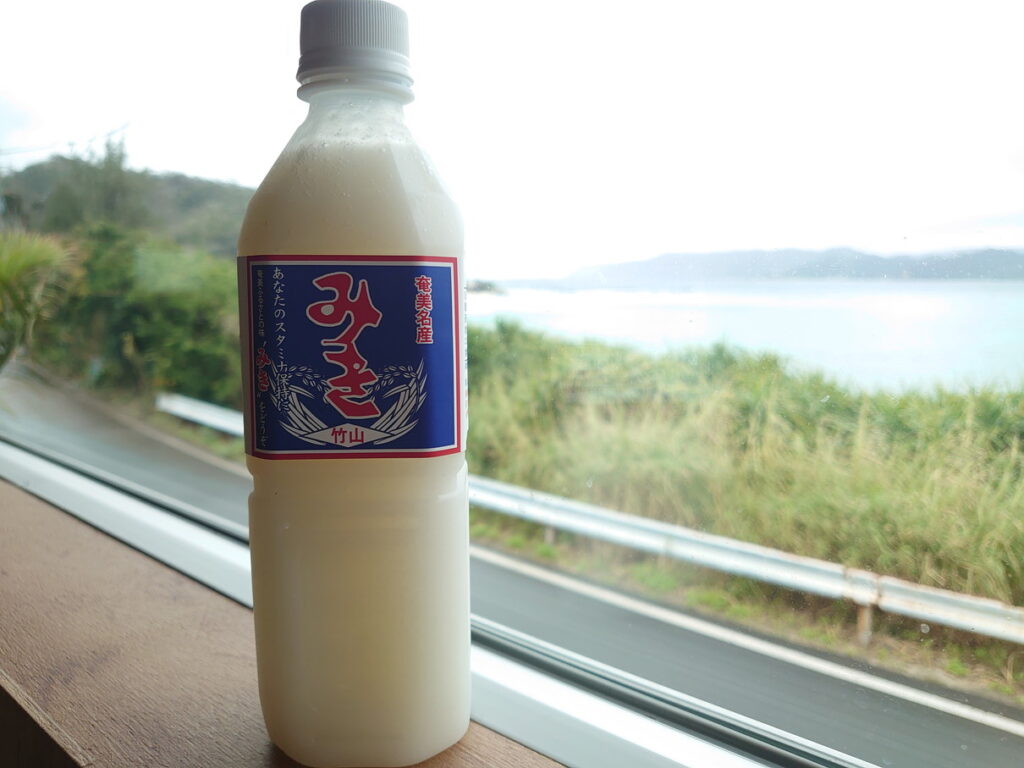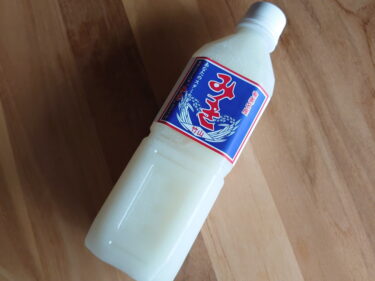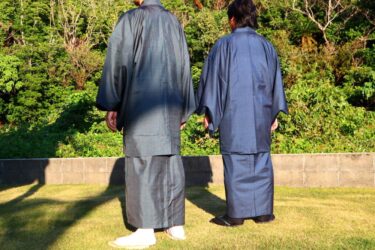"Miki" is the soul drink of Amami Oshima, popular not only among the residents of Amami Oshima but also among tourists as a souvenir. It is a traditional fermented beverage made from rice and sweet potatoes and rich in lactic acid bacteria. In this article, we will introduce how Miki was born, how it is currently consumed, and the health benefits of Miki.
- 1 Miki comes from that drink that was featured in the movie!
- 2 Modern Miki evolved for easy drinking
- 3 How to drink a good Miki
- 4 Health Benefits of Miki
- 5 Postscript
- 6 Miki comes from that drink that was featured in the movie!
- 7 Modern Miki evolved for easy drinking
- 8 How to drink a good Miki
- 9 Health Benefits of Miki
- 10 Postscript
Miki comes from that drink that was featured in the movie!
Miki is written in kanji (Chinese characters) as "sacred wine. The original form of miki was "Kuchikamizake," which was made by fermenting rice and barley during festivals in the Kingdom of the Ryukyus.Kuchibu-shu is an alcoholic beverage formed by the natural fermentation of what a young woman spits out after chewing rice or other grains. In the movie "Your Name." which became a topic of conversation.

During Shinto rituals and festivals, a "noro" (celebrant), a female deity official, offered sacred wine to the gods. However, in the late 19th century, with the dissolution of the Ryukyu Kingdom due to the abolition of feudal domains, the noro system disappeared, and the custom of drinking sake by mouth rapidly fell into disuse.
In addition to the mouth-bite type, there are other types of sake fermented with koji mold. In addition, not only rice but also barley, millet, and sweet potatoes were used in some areas.
Modern Miki evolved for easy drinking
The main ingredients of miki are rice, sweet potatoes, and sugar. Modern miki is a thickened fermented beverage, like sweet porridge or alcohol-free amazake. It is very sweet when freshly made, but as the days go by and the fermentation process continues, it becomes more sour.

Miki, while fulfilling its original role as an offering during rituals, has become much more of an everyday beverage. In the past, miki was handmade by each family, but now there are several miki shops on the island that specialize in miki. Since it contains no alcohol and is readily available at supermarkets and convenience stores, it is a familiar drink enjoyed by everyone from children to adults.
However, perhaps it is the dictates of tradition, many younger people do not drink as much mixi as older people. Efforts to preserve the traditional Miki culture for the next generation have led to the birth of new ways to enjoy Miki for the modern age, such as Miki gelato and "Miki bread" made from the yeast contained in Miki.
How to drink a good Miki
Miki is best drunk chilled. Highly nutritious and easy to digest, miki is useful for preventing summer fatigue in Amami, where the weather is very hot. Miki is also recommended when you catch a cold. It is an easy way to take in nutrition even when you have no appetite.
Some mixes are thick and traditional, while others are light and modern. Also, sweet, freshly made miki is said to be easier for children and young people to drink. On the contrary, frequent Miki drinkers tend to prefer the more fermented and sour ones. The gentle taste with a pronounced sweetness and the refreshing sweet and sour taste both have their own deliciousness. Please decide when to drink according to your preferred taste. However, Miki's shelf life is around 10 days from manufacture, so drink it up as soon as possible!
One of the charms of Miki is that it can be drunk in a variety of ways, not just as is. We recommend mixing Miki with juice such as mandarin orange, orange, or mango. Other ways to drink Miki include mixing it with milk, carbonated water, or brown sugar shochu. It is also delicious with fruit or fruit jelly, and eaten yogurt-style.

Health Benefits of Miki
Miki is a fermented beverage. It is rich in lactic acid bacteria and is effective in regulating the intestinal environment. It is also said to be effective in relieving and preventing constipation and improving rough skin. Nutritious and filling, miki is perfect for summer when you have a poor appetite or when you are feeling under the weather.
We have already mentioned that miki is best drunk chilled in summer, but you can also warm up miki and drink it in winter to make you feel warm and fuzzy. Although the flavor will be less than when served chilled, it will be thicker and have a texture similar to corn potage.
The Amami region is famous for its longevity. The reason why Amami Oshima is called "the island of longevity" is actually related to Miki. Amami has many unique traditional foods. Amami's traditional food, which consists of fermented foods such as miki, beans and vegetables high in dietary fiber, and specialty pork, forms a characteristic intestinal microflora. A healthy gut also leads to the maintenance of normal brain function, which is correlated with the gut and is the source of longevity.
Postscript
Miki can be easily purchased at convenience stores and supermarkets on Amami Oshima Island, and in most cases are sold together near the milk. Even though the ingredients are the same, the taste differs depending on the maker, so please try to find the one you like when you visit Amami. You can even order it online!
I hope this delicious miki tradition of easy nutrition and longevity continues.
"Miki" is the soul drink of Amami Oshima, popular not only among the residents of Amami Oshima but also among tourists as a souvenir. It is a traditional fermented beverage made from rice and sweet potatoes and rich in lactic acid bacteria. In this article, we will introduce how Miki was born, how it is currently consumed, and the health benefits of Miki.
Miki comes from that drink that was featured in the movie!
Miki is written in kanji (Chinese characters) as "sacred wine. The original form of miki was "Kuchikamizake," which was made by fermenting rice and barley during festivals in the Kingdom of the Ryukyus.Kuchibu-shu is an alcoholic beverage formed by the natural fermentation of what a young woman spits out after chewing rice or other grains. In the movie "Your Name." which became a topic of conversation.

During Shinto rituals and festivals, a "noro" (celebrant), a female deity official, offered sacred wine to the gods. However, in the late 19th century, with the dissolution of the Ryukyu Kingdom due to the abolition of feudal domains, the noro system disappeared, and the custom of drinking sake by mouth rapidly fell into disuse.
In addition to the mouth-bite type, there are other types of sake fermented with koji mold. In addition, not only rice but also barley, millet, and sweet potatoes were used in some areas.
Modern Miki evolved for easy drinking
The main ingredients of miki are rice, sweet potatoes, and sugar. Modern miki is a thickened fermented beverage, like sweet porridge or alcohol-free amazake. It is very sweet when freshly made, but as the days go by and the fermentation process continues, it becomes more sour.

Miki, while fulfilling its original role as an offering during rituals, has become much more of an everyday beverage. In the past, miki was handmade by each family, but now there are several miki shops on the island that specialize in miki. Since it contains no alcohol and is readily available at supermarkets and convenience stores, it is a familiar drink enjoyed by everyone from children to adults.
However, perhaps it is the dictates of tradition, many younger people do not drink as much mixi as older people. Efforts to preserve the traditional Miki culture for the next generation have led to the birth of new ways to enjoy Miki for the modern age, such as Miki gelato and "Miki bread" made from the yeast contained in Miki.
How to drink a good Miki
Miki is best drunk chilled. Highly nutritious and easy to digest, miki is useful for preventing summer fatigue in Amami, where the weather is very hot. Miki is also recommended when you catch a cold. It is an easy way to take in nutrition even when you have no appetite.
Some mixes are thick and traditional, while others are light and modern. Also, sweet, freshly made miki is said to be easier for children and young people to drink. On the contrary, frequent Miki drinkers tend to prefer the more fermented and sour ones. The gentle taste with a pronounced sweetness and the refreshing sweet and sour taste both have their own deliciousness. Please decide when to drink according to your preferred taste. However, Miki's shelf life is around 10 days from manufacture, so drink it up as soon as possible!
One of the charms of Miki is that it can be drunk in a variety of ways, not just as is. We recommend mixing Miki with juice such as mandarin orange, orange, or mango. Other ways to drink Miki include mixing it with milk, carbonated water, or brown sugar shochu. It is also delicious with fruit or fruit jelly, and eaten yogurt-style.

Health Benefits of Miki
Miki is a fermented beverage. It is rich in lactic acid bacteria and is effective in regulating the intestinal environment. It is also said to be effective in relieving and preventing constipation and improving rough skin. Nutritious and filling, miki is perfect for summer when you have a poor appetite or when you are feeling under the weather.
We have already mentioned that miki is best drunk chilled in summer, but you can also warm up miki and drink it in winter to make you feel warm and fuzzy. Although the flavor will be less than when served chilled, it will be thicker and have a texture similar to corn potage.
The Amami region is famous for its longevity. The reason why Amami Oshima is called "the island of longevity" is actually related to Miki. Amami has many unique traditional foods. Amami's traditional food, which consists of fermented foods such as miki, beans and vegetables high in dietary fiber, and specialty pork, forms a characteristic intestinal microflora. A healthy gut also leads to the maintenance of normal brain function, which is correlated with the gut and is the source of longevity.
Postscript
Miki can be easily purchased at convenience stores and supermarkets on Amami Oshima Island, and in most cases are sold together near the milk. Even though the ingredients are the same, the taste differs depending on the maker, so please try to find the one you like when you visit Amami. You can even order it online!
I hope this delicious miki tradition of easy nutrition and longevity continues.








